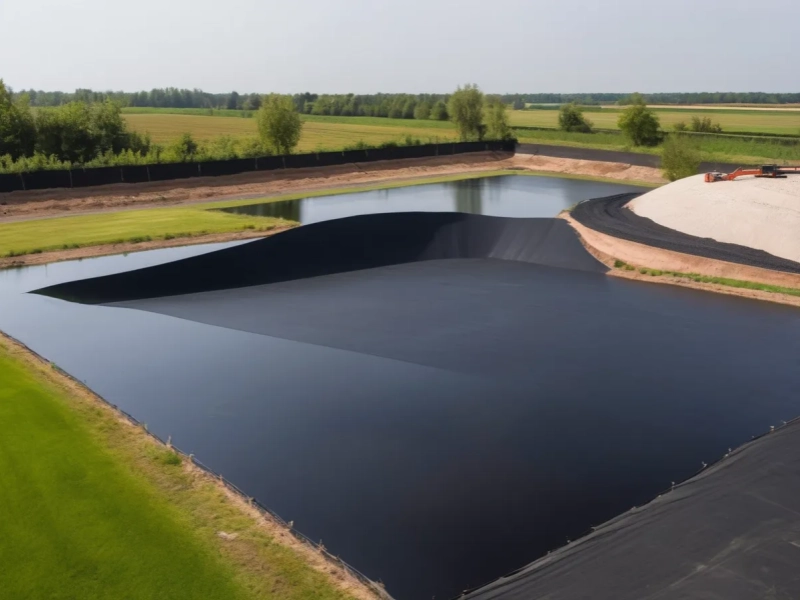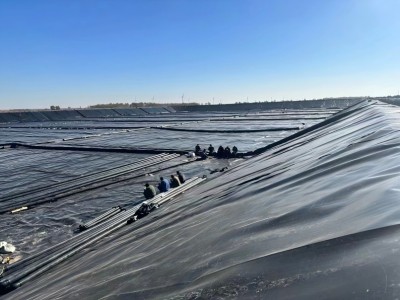
What Are the Applications of Geomembrane
2024-09-14 15:00
Summary:
Geomembranes are vital in a wide array of industries, offering solutions for everything from environmental protection to industrial processes. Understanding the various applications of geomembranes can help businesses, contractors, and engineers make informed decisions regarding their use in projects. This blog delves into the different geomembrane uses, shedding light on their value across multiple sectors.
Environmental Protection and Waste Containment
The application of geomembrane in environmental protection is one of the most significant uses. Geomembranes are widely employed in landfills as liners to prevent contaminants from seeping into the ground and polluting groundwater sources. They also serve as covers to minimize gas emissions. The impermeable nature of these materials ensures that hazardous substances are securely contained, making them ideal for solid waste management and hazardous waste storage.
Geomembrane applications are also prevalent in mining operations, where they act as liners for tailing ponds to prevent harmful chemicals from leaking into surrounding environments. This protective function reduces environmental degradation and ensures compliance with strict environmental regulations.
Water Management and Storage
One of the most prominent geomembrane uses is in water management. From reservoirs to irrigation canals, geomembranes play an essential role in preventing water loss through seepage. In arid regions, where water is scarce, geomembranes help ensure that every drop is preserved by creating an impermeable barrier between the water and the ground.
The uses of geomembrane in this context also extend to aquaculture, where they line ponds to maintain water levels and create healthier aquatic environments. This controlled water management contributes to better fish production and less risk of contamination.
Agriculture and Irrigation
Applications of geomembranes in agriculture go beyond water conservation. Farmers use them to line irrigation ditches, preventing water loss and ensuring efficient distribution across fields. Geomembranes are also effective in creating containment barriers for manure lagoons, reducing the risk of runoff into nearby water bodies.
By optimizing water use and managing waste, the application of geomembrane in agriculture helps boost productivity while maintaining environmental sustainability. This use is particularly important in regions where water scarcity and soil health are major concerns.
Industrial Applications
In industrial settings, geomembrane applications are broad and varied. Industries often use geomembranes to contain liquids and chemicals, ensuring that leaks do not lead to contamination or hazards. They are commonly found in oil and gas, chemical manufacturing, and food processing plants, where their ability to create durable, impermeable barriers is essential for operational safety.
Another significant application of geomembrane in industries is in secondary containment systems, which are designed to catch spills in the event of primary containment failure. This added layer of protection helps companies avoid environmental damage and potential legal liabilities.
Infrastructure and Civil Engineering
Geomembranes are increasingly finding a place in infrastructure and civil engineering projects. Their use in tunnel linings, dam construction, and roadways highlights their versatility. In these contexts, the uses of geomembrane include water and moisture control, soil stabilization, and erosion prevention.
For example, in road construction, geomembranes help prevent water from seeping into the base layers, maintaining the structural integrity of the road. Their impermeability and strength make them an ideal choice for projects that require long-lasting, durable solutions.
Conclusion:
The wide-ranging applications of geomembranes demonstrate their significance across industries. From environmental protection to agriculture, water management, and industrial use, geomembranes are integral to modern construction and maintenance projects. Their durability, impermeability, and versatility make them the go-to solution for a variety of challenges. Understanding how geomembranes can be used in specific contexts allows engineers, architects, and business owners to maximize their benefits, ensuring long-term success in their projects.
FAQs:
What is the primary purpose of a geomembrane?
Geomembranes are primarily used to create impermeable barriers that prevent the migration of liquids or gases, offering containment solutions in various industries.
Can geomembranes be used for water conservation in agriculture?
Yes, one of the main geomembrane applications in agriculture is lining irrigation canals and ponds to prevent water loss, especially in regions with limited water resources.Are geomembranes environmentally friendly?
Geomembranes play a crucial role in environmental protection by containing hazardous waste and preventing contamination of soil and water, making them a key component in sustainable practices.What industries benefit most from geomembrane applications?
Industries such as mining, agriculture, water management, and industrial manufacturing frequently use geomembranes for containment, protection, and efficiency in various processes.How long does a geomembrane last?
The lifespan of a geomembrane depends on factors like material type, environmental conditions, and installation quality. However, they are generally designed to be durable and can last several decades under proper conditions.









